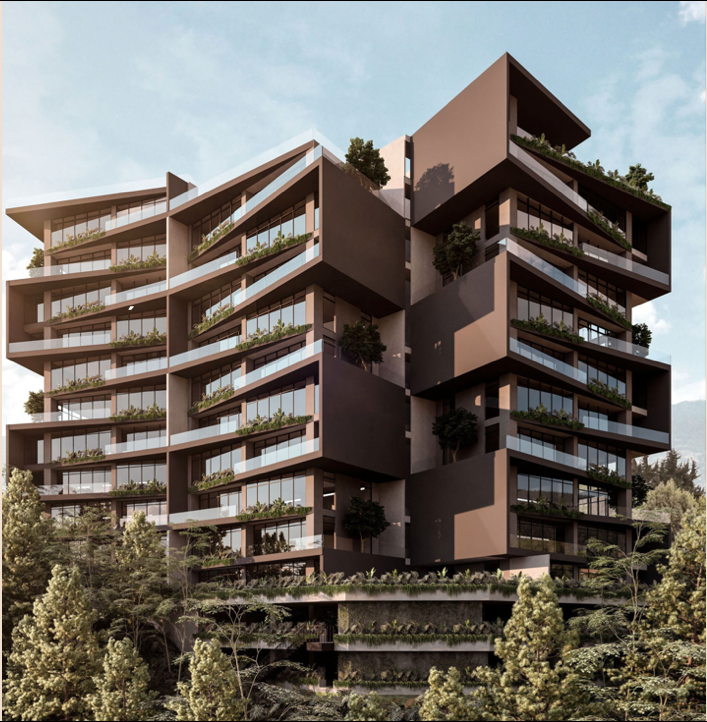Did you know that architecture is in a crisis?
It’s a major crisis that has recently hit a high note in the media. Almost daily we are bombarded by news that architecture is imploding! Contemporary buildings are ugly! Architects have lost their relevance! Architectural education is broken! The apex was a recent episode in France where Frank Gehry raised his middle finger to the press and declared that “98% of everything built and designed today is pure shit.”
I beg to differ slightly from Gehry. It’s this whole crisis that is pure shit.
Architecture is on the verge of a golden age, but it feels like a catastrophe to the established critics and tastemakers whose power is being wrested away by the public — the people who actually use architecture. This fundamental shift in architecture is happening thanks to social media.
Take a moment to think about how you consume architecture. Five thousand years ago, you had to walk to a city to see a building. As faster modes of transportation developed, the upper-class Grand Tours of the 17th through the 19th centuries became accessible to everyone in the 20th. People could travel faster, explore farther, and experience more of the built environment.
Media has accelerated too, of course. Just 20 years ago, you could only see buildings on a printed page that had passed the discerning eye of a magazine editor. Now, social media means the consumption of architecture is both instantaneous and freed from geography; it has transcended the historic limits of time and space. That means that a selfie taken in Seattle with OMA’s sharp Seattle Public Library in the background becomes a part of our collective consciousness, and this happens faster and with more authority than with buildings of the past. Despite its radical new forms and the unorthodox arrangement of its spaces, the library has become Seattle.
Instagram, Facebook, and Twitter are fomenting the biggest revolution in architecture since the invention of steel, concrete, and the elevator.
It is a media revolution.
In the past, architects never had a truly unfiltered means by which they could hear the public’s reaction to their work, so they necessarily relied on the critics. Now, thanks to faster communication, the barriers surrounding the architectural conversation have been broken down. Today, every single person who lays eyes on a building can be at once a user, an architectural photographer, and a critic with a public forum — even if that criticism is simply “I luv that” or “check me out I am in Seattle.”
Like a lot of professions, architecture has long suffered from the reverberations of its own echo chamber. The lack of outside input has created a peculiar — and some would say adorable — subculture of black-clad bespectacled people who use highfalutin language to describe everyday places (I guess an alley is a liminal space). Part of that subculture has been the evolution of styles and movements that loosely define an era: The ’70s was Brutalism, the ’80s Post Modernism, the ’90s Deconstructivism.
The one style that epitomizes our current moment is Experimentalism, and that is because the echo chamber has been smashed. In my mind, I imagine a Buckminster Fuller geodesic dome with architects floating around in black suits and round black glasses talking to each other. Then along comes the giant wrecking ball of social media banging, banging, banging on that dome until POP. Whooooooosh! in rush new opinions about buildings and places.
Social media has infiltrated and ultimately destroyed the insular architectural world. For the first time in history, architects can hear the public.
The first crack in the echo chamber was at the dawn of the new millenium when — ironically enough, given his recent claim — the Frank Gehry-designed Guggenheim Bilbao opened in 1997. The internet was nascent, but, as Paul Goldberger explained at the time, it “was one of those rare moments when critics, academics and the general public were all completely united” in their opinion about a building — they loved it. And it showed: Tourism in Bilbao increased 2500 percent after the museum opened.
Bilbao launched another major crisis in architecture: the crisis of the “starchitect.” Even if you don’t follow architecture, you have probably heard of Zaha, Libeskind, and Rem. While the critics pondered the efficacy of a personality-driven profession, these select few architects happily exploited the changing media landscape.
What starchitects discovered was the public craving for innovation in civic projects. As they built more, mayors around the world realized that audacious architecture could raise the profile of their cities on a global scale. This craving for newness has accelerated exponentially in parallel with our ability to share information. After all, what is the point of taking a selfie in Seattle if Seattle looks exactly like Philadelphia?
The proliferation of social media means that the extreme experimentation that was once the exclusive provenance of big-name starchitects is now the defining architectural movement of our age.
There is no crisis in architecture. The sense of crisis is just a byproduct of the punctured echo chamber. It is architecture’s giant sucking sound. If you listen closely, you will realize that it is being generated by a group of critics and opinion makers who are struggling with a new paradigm where the public calls the shots. This is a world without a dominant style, which confuses the old guard. This is an architecture that — because of the public’s hunger for newness — is finally free to create thoughtful and sometimes radical solutions for the problems that our society faces.
Architects don’t make golden ages in architecture; people and patrons do. Social media has awoken the public’s interest in architecture — and the timing could not be better. Building things comes with high stakes because architecture doesn’t just reflect our society but shapes our society.
To my fellow architects, I say keep imagining and fighting for better buildings. There is now a public that craves innovation. If we listen to them instead of the voices proclaiming doom and gloom, we will be able to seize the opportunity of this new golden age. This is going to be an amazing time.
Source: A New Golden Age of Architecture
**Inscríbete a nuestro newsletter para recibir contenido estratégico de desarrollo inmobiliario, haciendo click aquí. Si estás interesado en recibir información de nuestros servicios de conceptualización de proyectos y cursos, envíanos un correo a: capacitacion@grupo4s.com
 Regresar
Regresar





